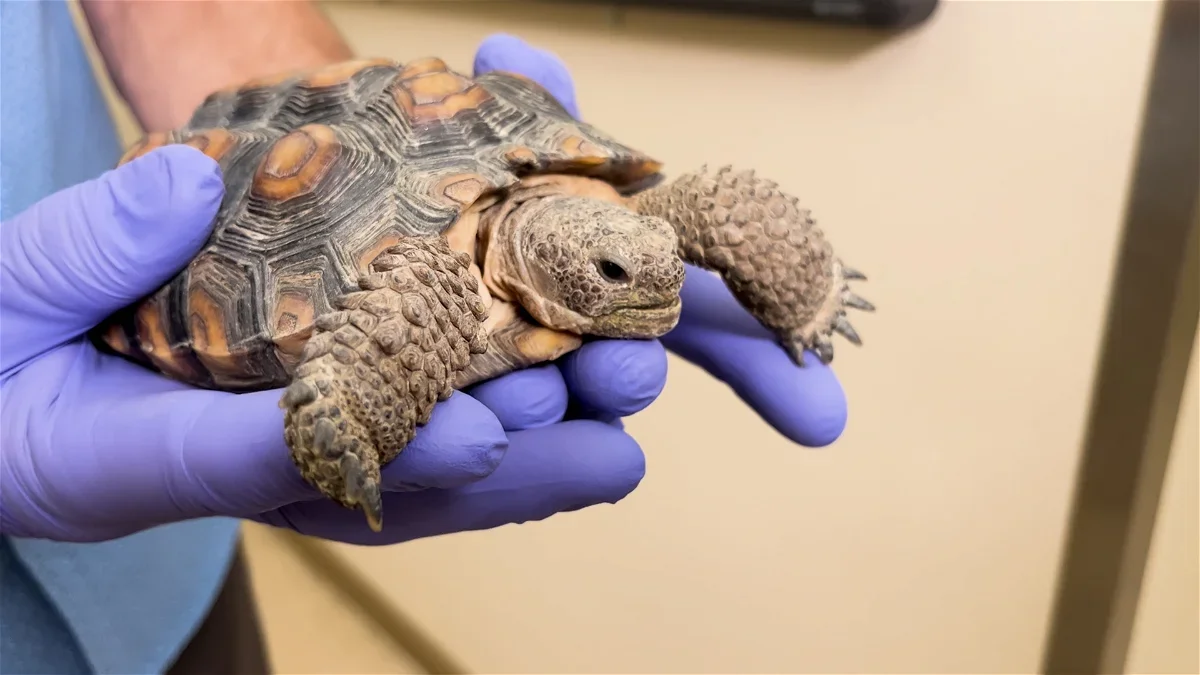Critically endangered Mojave desert tortoises emerge from winter shelter

The San Diego Zoo Wildlife Alliance and The Living Desert Zoo and Gardens have reintroduced 70 critically endangered Mojave desert tortoises to their native habitat on Edwards Air Force Base.
The tortoises emerged from their winter burrows Monday following the transfer of the animals as part of a collaborative effort to increase the species' survival rate. Tortoises enter brumation during the winter, a state of deep sleep specific to reptiles, the organizations wrote in a report.
The 70 reptiles are the first to be reintroduced into the wild as a result of a partnership between San Diego Zoo Wildlife Alliance, The Living Desert Zoo and Gardens, Edwards Air Force Base, the U.S. Fish and Wildlife Service and the U.S. Geological Survey.
According to the organizations, within 24 hours of reentering their native habitat, the tortoises were exhibiting positive natural behaviors by constructing new burrows or modifying existing ones for shelter.
"We've worked so hard to get here, and we've been through so much together,'' said Melissa Merrick, associate director of recovery ecology at San Diego Zoo Wildlife Alliance. "We've had to re-strategize, switch plans, react and adapt to so many emerging situations, and we've all done it successfully to get to this point."
"The second group of young headstart tortoises just arrived from The Living Desert and will spend the next six months with us before joining their predecessors in the wild,'' Merrick said. "It's an exciting time for the program.''
Check Out: Living Desert Zoo & Gardens housing dozens of endangered tortoise hatchlings
Scientists track egg-carrying tortoises, monitor the adult females as they lay eggs in human care and rear the hatchlings for one to two years. The hatchlings are reared indoors at The Living Desert for six months, and then in a protected outdoor environment at Edwards Air Force Base.
The protection is needed for the species, as several years ago San Diego Zoo Wildlife Alliance scientists were excavating nests in the middle of the night under emergency circumstances due to a dangerous heat wave, and wildlife care staff at The Living Desert were preparing to receive the tortoises a month early and care for tortoises still in varying stages of hatching.
According to the SDZWA, in September 2023, the nests of a second cohort -- laid in protected outdoor habitats at Edwards Air Force Base -- were again excavated under emergency circumstances. Predatory ants and fly larvae attacked hatchling tortoises as they emerged from their shells. It is believed the historic arrival of Hurricane Hilary created extra-moist conditions, leading to a breeding ground for these insects.
The surviving tortoises received veterinary care at The Living Desert. This month, they will be transferred to the outdoor headstart habitats at Edwards Air Force Base managed by San Diego Zoo Wildlife Alliance, where they will spend the next six months. At one year of age, they will be reintroduced into their native habitat.
"Indoor rearing at The Living Desert enables the tortoises to grow to three to five times the size they would at this stage in their native habitat, making them less vulnerable to predation,'' a report from the organizations reads. "Once common throughout the Mojave and Sonoran deserts of California, Nevada and Arizona, desert tortoise populations have declined by an estimated 90% in the last 20 years."
California's Mojave desert tortoise faces threats including habitat loss and fragmentation, disease, human-subsidized predators and climate change. The U.S. Fish and Wildlife Service's evaluation of population trends from 2018 indicates the species is on a path to extinction under current conditions.
However, with continued successful efforts to address the threats theyface, there is hope this trend can be reversed, the authors write.




